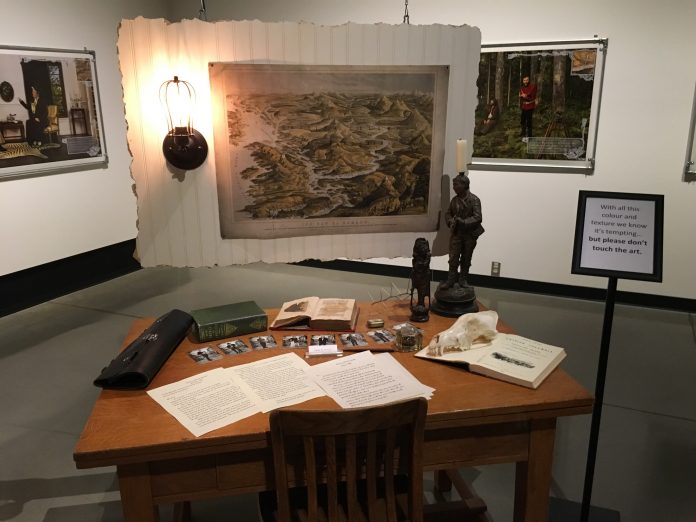The latest exhibition at Abbotsford’s Reach Gallery Museum brings a unique approach to the narrative of Canada’s colonial history. Titled Grand Theft Terra Firma (GTTF), the work, created by artists David Campion and Sandra Shields, uses video game thematics to condemn the period of the colonisation of North America and satirises it as an amoral video game.
Using graphic themes and common elements from the video game series Grand Theft Auto (GTA) the artists draw parallels between the (re-)settlement of North America and the controversial thematic elements of the game. GTA requires players to commit illegal and violent acts to succeed in the game. The artists reinterpret these elements of the game in the context of GTTF as characters, methods of abuse, and the commodification of resources and eradication of Indigenous culture during the colonisation of the Americas.
GTTF blurs the boundaries between the use of photography and sculpture by using both media in conjunction; the sculptural elements of the exhibition seen in several photos lend to the success of the show as a cohesive work. The sculptural elements attempt to draw the viewer back from the risk of viewing the colonial period as fictional like the game it mimics. These pieces are the lifeline of the work demonstrating its strongest front: the ability to satirise the era but still present it as a real — even if regrettable — part of our collective Canadian history.
Evidence of the research put into the work is clear as well. It demonstrates an extensive knowledge of the history and culture of the period in question. The artists pay homage to British Columbian history via replica news clippings aggregated from actual articles from the period. All the replica pieces in the show — from the letters on the writing desk to the canvas map of the settlements — contain elements of real historical fact.
This raises a unique question which the artists address in the introductory statement for the work: does the satirisation of the elements of the period trivialize the injustice of the time? It walks a thin line, since to satirise something without trivialization, the criticism must be accurate and fact-based. The clear, Photoshopped compilation obvious in most of the images brings this show as close as it gets to toeing the line. Because of the unwittingly humorous and staged nature of the photographs, the piece loses its touch with reality and gravity of the era in question in a way that makes it very tough for the sculptural components to draw it back. The work is still effective in satirising and convicting the social crimes of the time but technical barriers cripple it from being as effective as it could be. Utilizing actual historical photographs and artefacts as elements of a fictional video game would surely have a much more jarring effect than manufactured replicas. Due to the fact that this would likely be beyond the scope of the artists, this work is an effective attempt at doing as well as is realistically possible.


